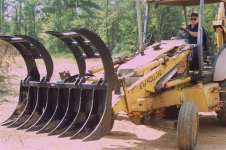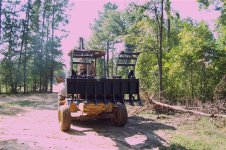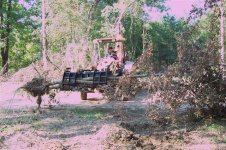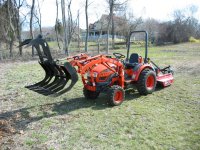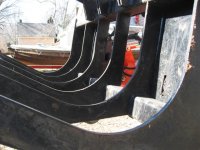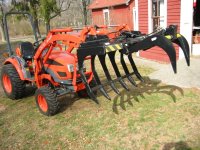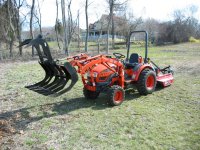tlbuser
Veteran Member
Only big bulldozers can just lower their rake blade and plow through territory. The rest of us do it piece by piece so there is no benefit to having a grapple as wide as your bucket.
Big being a key word there. We use a toolbar/ripper (like on a box blade) and or disc set (add considerable weight) to cut roots before final rake, grade and seed.


